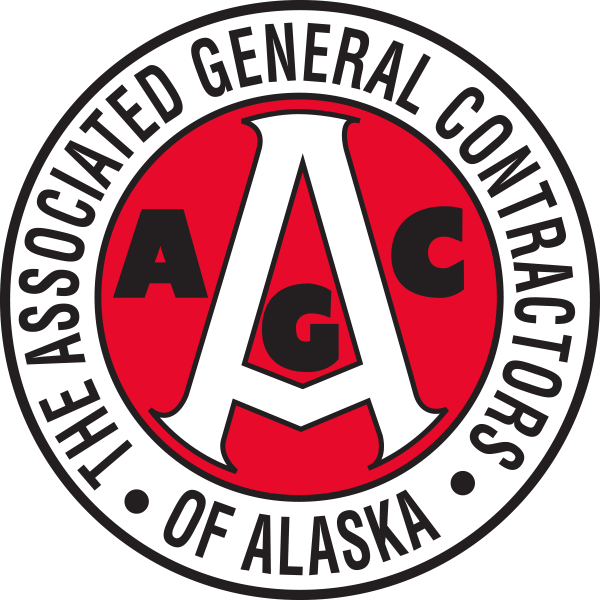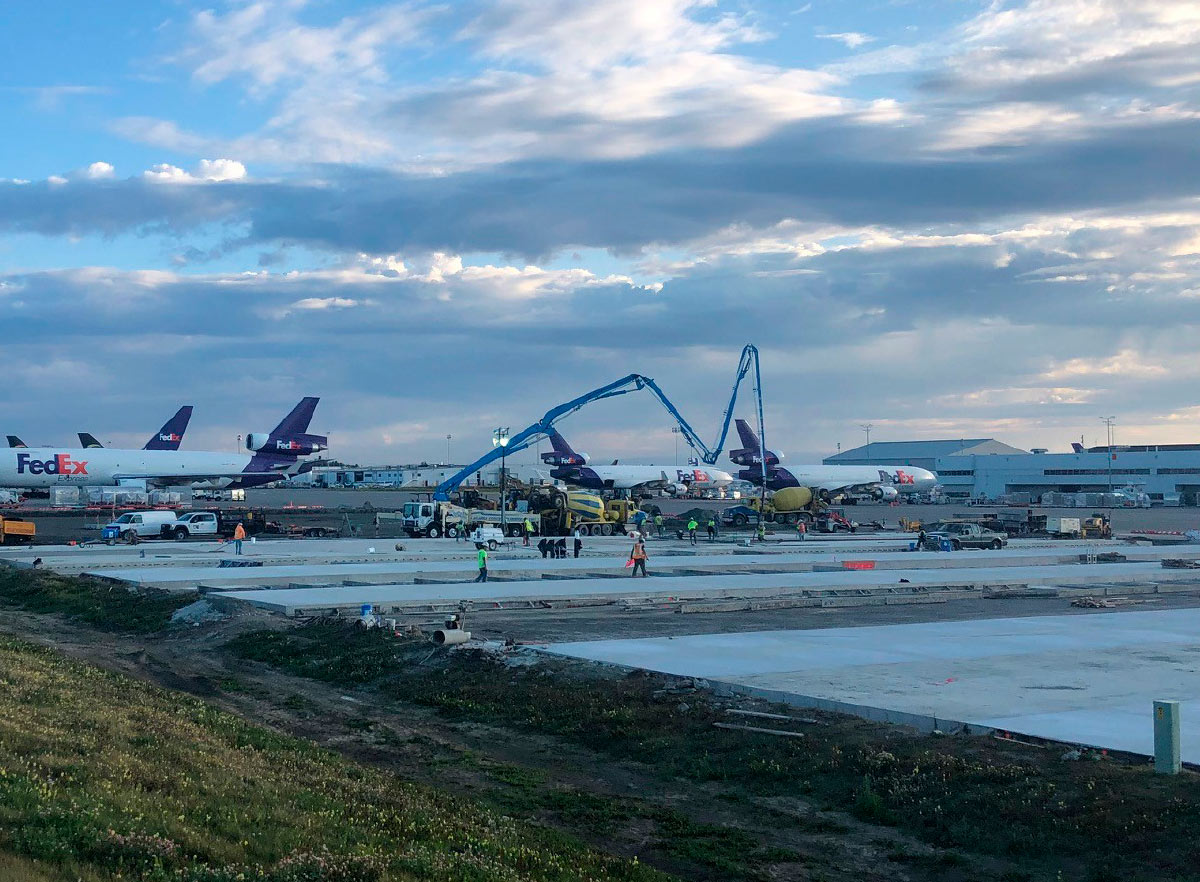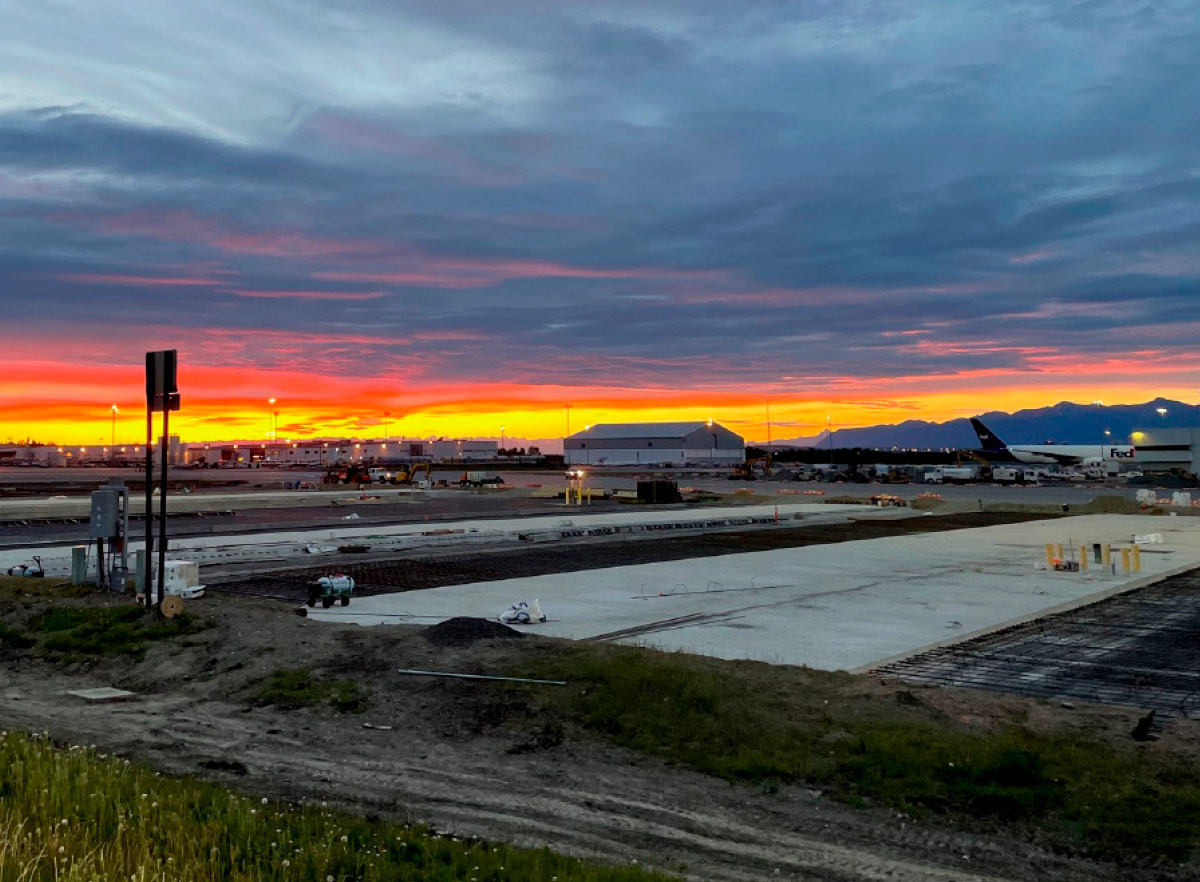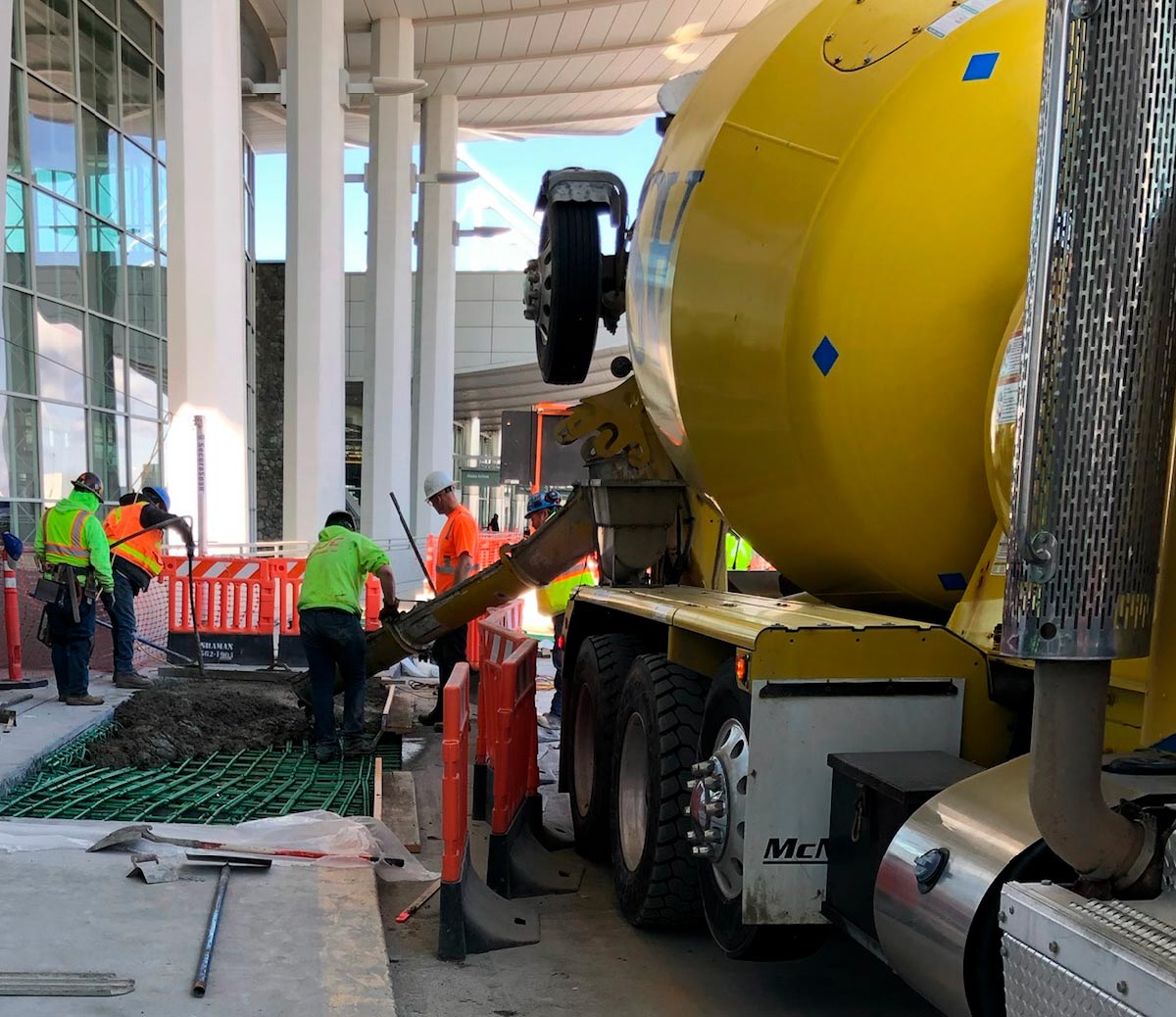
Update
Photo courtesy of Granite Construction Inc.
ention the Ted Stevens Anchorage International Airport and most people think about the arrival and departure of passenger planes. But the Anchorage airport is a major hub for cargo that requires its own infrastructure to make loading and unloading freight happen smoothly. This summer major upgrades to airport facilities will improve access for travelers and improve the efficiency of cargo traffic for several companies.
Phase two then kicks off with Granite repaving the remainder of Tower Loop Road and installing new streetlights.
James Lombardo, project engineer for Alaska Department of Transportation & Public Facilities, or DOT&PF, Central Region, says upgrades are important since improvements to Terminal Loop Road haven’t happened since its initial construction. Pat Sinnett, project engineer for DOT&PF Central Region, adds that ramps that meet FAA requirements will make the Anchorage airport compliant with the Disabilities Act.
Though the project is short and straightforward, Lombardo says working in high traffic areas is always challenging.
“It’s basically like a jigsaw puzzle,” says Lombardo. “We migrated some traffic up the commercial ramp and split lanes to increase flow.”
Kevin Boyce, project manager for Granite, says the entire project should be completed in early fall at a cost of approximately $6.9 million.
A hardstand is a paved area for parking heavy vehicles, such as an airplane, for a significant period without sinking. Hardstands are designed to be thicker than road pavement to increase strength and durability.
Some unexpected challenges developed during the COVID-19 pandemic. Scott Dunlap, vice president for Roger Hickel Contracting, says there was a drastic increase in the volume of flights that wasn’t expected when the project was originally phased. This increase required changes to project phasing to accommodate FedEx’s increased operations while still facilitating construction.
“Through multiple collaboration sessions with FedEx operations, designers, and Roger Hickel Contracting, we were able to develop a phasing plan that met everyone’s needs and did not increase the cost of the overall project,” says Dunlap.
Dunlap says the Anchorage airport, or ANC, is a major hub and economic driver for the entire state of Alaska, with FedEx as a major entity. He says it’s important for Roger Hickel Contracting to produce a quality project on time and on budget so large companies like FedEx have confidence in local contractors and continue to work with them in the future.
“This confidence facilitates expansion and future construction at ANC and long-term employment for the entire community,” says Dunlap.
The hardstand project is expected to be completed in the fall. The overall cost of the project is undisclosed.


Photos courtesy of Roger Hickel Contracting.
Sean Dolan, CEO of Northlink Aviation, says his company is embedding ESG—non-financial factors including environmental, social, and governance, which helps companies measure a project’s sustainability—into the South Campus Air Cargo Terminal. Northlink’s terminal will be the only facility at the Anchorage airport that captures and recycles deicing fluid—made up of glycol—that is used to deice planes during winter months.
“This is critically important to protecting nearby waterbodies,” says Dolan. “As we have moved forward with development, we have engaged in a robust dialogue with our neighbors so that we can listen to concerns and make sure we are doing our best to respond to them and be a good neighbor.”
He adds that Northlink has directly incorporated feedback from the community into its design, including having a 700-foot setback from Raspberry Road and building a large, planted earthen berm.

Photo courtesy of Granite Construction Inc.
To sustain this growth and better serve the air cargo community, he says the airport needs new infrastructure to accommodate freighters that use Anchorage as a critical stopover as they deliver cargo between Asia and the rest of North America.
“We expect that the project will benefit our customers by providing them with world-class infrastructure to operate more efficiently and profitably,” says Dolan. “Our terminal will benefit the airport by providing the infrastructure at the Anchorage Airport as transpacific air cargo grows.”
Short-term, Dolan says the significant amount of capital invested in the construction project is creating jobs and putting a meaningful amount of money into the Anchorage economy. Long-term, NorthLink will employ a large team that will operate and maintain the facility and serve its air cargo customers.
NorthLink’s South Campus Air Cargo Terminal is scheduled for completion by the end of 2023. Tiger Infrastructure Partners, including its co-investor, the Alaska Future Fund, is providing the equity financing. Additional debt financing is coming from an international project finance bank that will be announced soon.